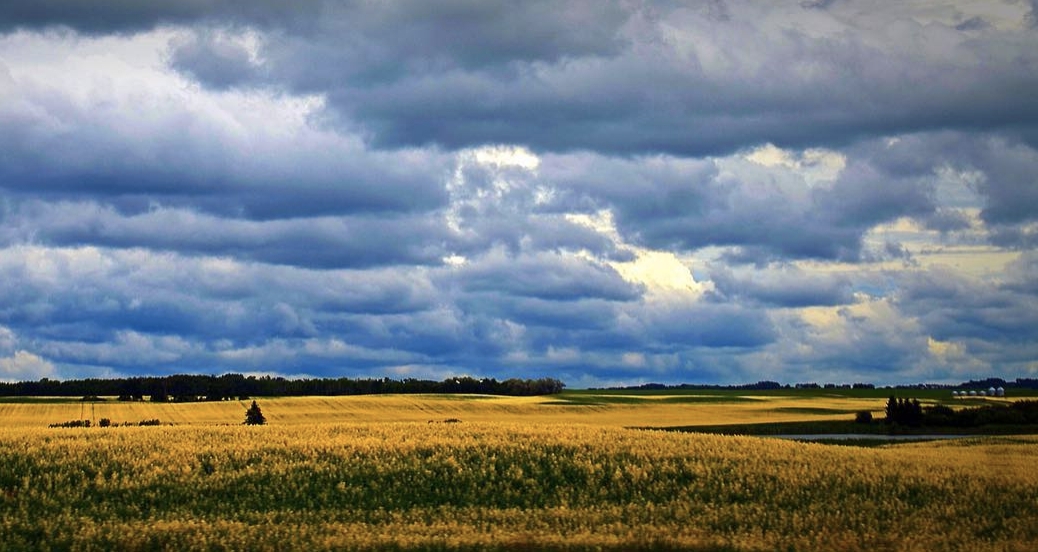
News
Prairie crop hail sums insured over $6.2 billion
Prairie farmers continue to insure their crops for hail damage at near record levels. 2017 recorded one of the lightest hail claim years since 2009. Claims produced insurance payouts of $96 million on just over 8,600 claims in Western Canada. Producer premiums totaled just over $286 million for an industry loss ratio of 33.8 per cent.
Dry spring conditions, combined with 2016 unharvested acres, and some continued industry rate declines resulted in a five per cent decrease in producer paid premiums for 2017.
With the lack of moisture much of the western prairies received little in the way of convective storm activity resulting in hail losses.
Hardest hit was Manitoba with a loss ratio of 45.9 per cent, a figure still well below a record 2016 loss ratio of 158.9 per cent. Alberta followed with a loss ratio of 33.7 per cent, compared to 83.6 per cent in 2016. Saskatchewan reported a 30 per cent loss ratio compared to 73 per cent in 2016.
Another year of contrasts and challenges emerged for producers. Dry conditions followed what looked to be a promising planting season. The dry conditions were wide spread across the western prairies. While welcomed by some after excess moisture in 2016, record and near record dry was reported through a large portion of Saskatchewan and parts of Alberta. Manitoba producers appeared to receive more timely precipitation. In spite of the dry conditions producers were presently surprised come harvest with yield and quality.
The storm season was spread across mostly July and August. All months of June thru October reported hail, however all months showed a decrease in storm frequency from the five year average. Claim frequency or claim to policy ratio was down about 30 per cent from the five year average. Storm severity or average per claim was down about 16 per cent from the five year average.
Early storms were localized to small areas. By mid-June larger more organized storms became prevalent for the summer hail season. Alberta’s most expensive storm date(s) were July 23rd costing companies over $19,000 per claim and July 27th damaging over 33,000 acres and costing in excess of $2.2 million.
Total hail payments were reported just over $25 million as compared to over $60 million in 2016. Storm severity decreased by about 25 per cent, while the storm frequency was down about 40 per cent from the five year average. The overall reported loss ratio was 33.7 per cent.
Total sums insured were down from 2016, with average charged rates showing a slight increase from 2016 after a less than stellar loss result last year. The decrease in sums insured resulted in a premium declined of four per cent.
Saskatchewan reported lower than average losses
The west central part of the province began the season with early moisture and delayed
seeding. The north east part of the province meanwhile still was trying to clean up 2016 harvest due to excess fall moisture and early winter. Meanwhile the southern part of the province awaited moisture to help start the crops.
The dry conditions gave way to some areas receiving timely mid-June moisture. Some southern areas not so lucky had spotty germination and continued drought concerns. Regardless most areas in the province produced average to above average crops with good quality.
Saskatchewan’s hail season began in early June with storms on the 2nd and 9th. Hail frequency was down about 44 per cent based on the five year average. The five year hail severity was decreased by roughly 10 per cent. Saskatchewan’s most expensive storm date(s) was July 20 and 21, costing companies $14.9 million on over 1100 claims. Total hail payments were just over $48 million compared to $125 million in 2016, a decrease of 61 per cent from a year earlier. The overall reported loss ratio was 30 per cent.
Provincial total sums insured decreased in 2017. The average charged rates also decrease for the year. Continued average industry loss results and competitive pressures likely contribute to the continued rate decline. These combined changes resulted in a five per cent decline to premiums for the year.
Manitoba recovers after a record hail year in 2016
Seeding was mostly complete by early June. Timely rains helped negate the dry conditions suffered in southern Saskatchewan and Alberta. With below average precipitation through June crops were still in good condition from spring moisture. Seasonal moisture provided great conditions throughout the growing season. This along with good harvest conditions provided Manitoba with average to above average yield and crop quality.
Manitoba’s hail season started in early June as well. With most crops still in the early stages minimal damage was recorded. The results from hail damage in Manitoba mirrored her sister prairie provinces. Manitoba’s most expensive hail day(s) appear to be July 21 and 22 costing companies over $11,000 per claim.
Hail frequency was down about 19 per cent from the five year average. Claim Severity was down about 17 per cent from the five year average. Total hail payments were just over $23 million compared to over $74 million in 2016. 2017 reported a stellar loss ratio of 46 per cent, compared to last year’s record 158 per cent loss ratio.
Total provincial sums insured had a marginal increase of three pre cent. This could be contributed to the large hail loss last year. Average charged rates also saw a minimal increase, likely from the historic loss results in 2016. These two factors would help contribute to a six per cent increase in premium for the year.
December 4, 2017 By The Canadian Crop Hail Association
